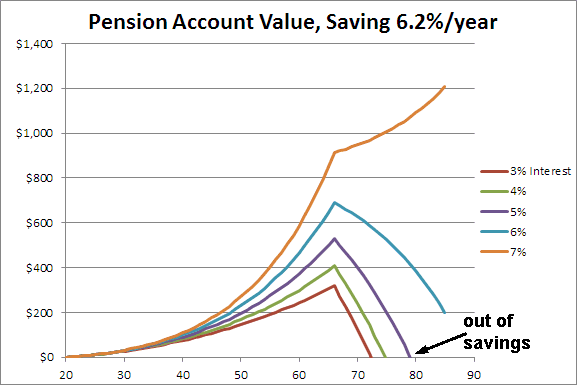Calculating Realistic Returns for Your Retirement
Post on: 18 Сентябрь, 2015 No Comment

Figuring out how much you’ll need to retire — or how much you can expect to earn on your retirement dollars — isn’t as simple as plugging numbers into an online calculator.
Many variables, including life expectancy, inflation, investment return, are subject to educated guesses which sometimes can lead to rosier projections.
Many retirement calculators assume an annual return of 8 percent, a lofty goal in today’s investing environment. Certified financial planner Stacy Francis, president of Francis Financial in New York, tells her clients to be very clear about what the assumptions are going into retirement calculators.
Plan ahead, and estimate on the conservative side and you can accumulate a great nest egg. A rate of return might be more realistic of 5 or 6 percent based on your overall risk tolerance in portfolio, she advises.
Online retirement calculators also often neglect to ask important questions about matching contributions, pensions, and Social Security. Without answers to those questions, those online tools won’t have the whole story.
Christine Benz, director of personal finance at Morningstar, suggests a conservative approach when projecting stock and bond returns for retirement-planning purposes. She suggests putting in different rates of returns into calculators — removing the default 8 percent return that most calculators use — and add in different numbers to gauge how different your retirement may look.
To ensure you build a nest egg that lasts, pre-retirees must follow the basic tenets of sound retirement planning before punching numbers into a calculator, financial advisors say. Key factors include: the age you want to retire, the annual income you will need, current market value of savings and investments and the value of your expected social security benefits.
Frank Troise, senior portfolio manager at SoHo Asset Management in San Diego, has another approach. Baby Boomers today need to look at the rate of returns in shorter time horizons. He believes retirement projections should be broken down into three rates of return. On a pre-tax basis, Troise assumes equity returns of 5 percent, fixed-income returns of 2.5 to 3 percent and cash at a quarter to half percent return.
Bottom line: There is no magic number. But many Americans can assume they will need 80 to 90 percent of their current expenses in retirement. That should factor in medical expenses as well as any additional income, including Social Security payments or perhaps an inheritance.
The outcome may be different for every retiree, but the basic equation will always remain the same: come up with an estimate of your expenses, subtract that from the money you will have coming in. The money that’s coming in or sitting in savings is what you’ll need to count on for living expenses. The anticipated return on your investments should reflect THAT reality.
You can follow Sharon on Twitter: @sharon_epperson














